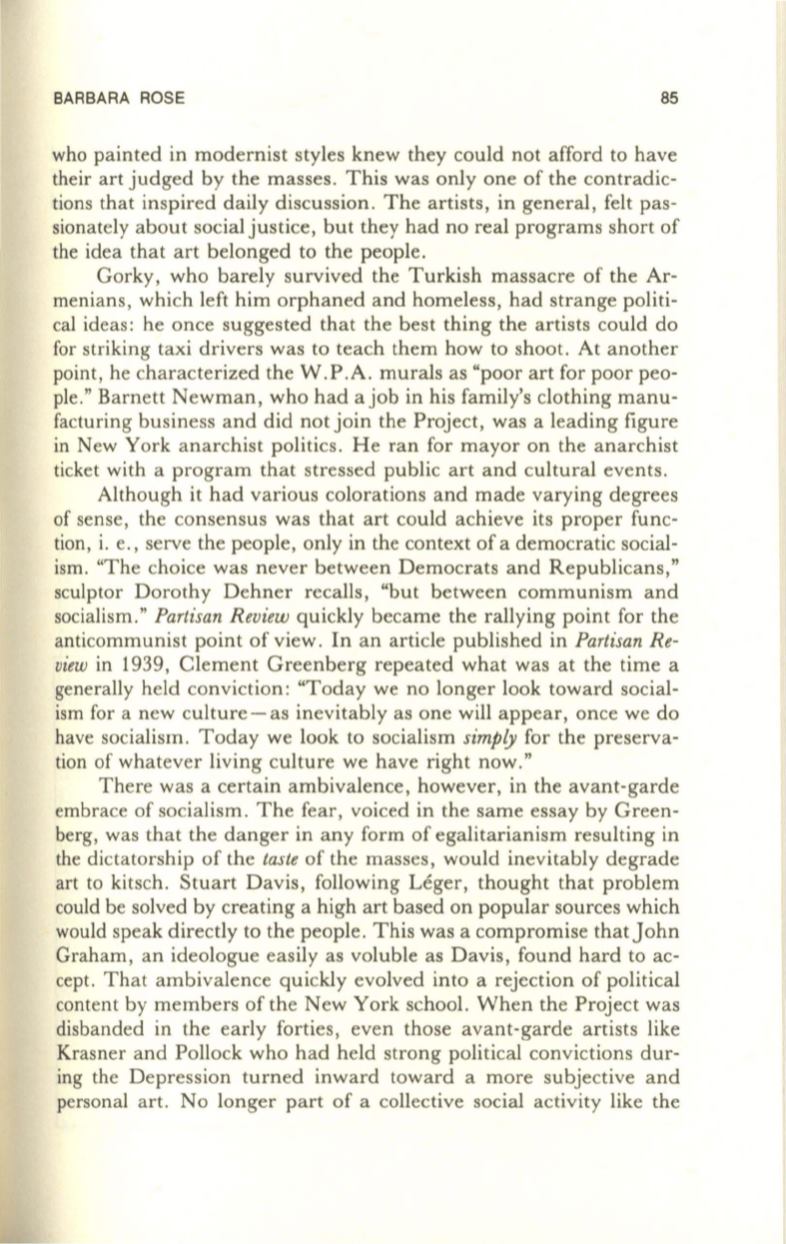
BARBARA ROSE
85
who painted in modernist styles knew they could not afford to have
their art judged by the masses. This was only one of the contradic–
tions that inspired daily discussion. The artists, in general, felt pas–
sionately about social justice, but they had no real programs short of
the idea that art belonged to the people.
Gorky, who barely survived the Turkish massacre of the Ar–
menians, which left him orphaned and homeless, had strange politi–
cal ideas: he once suggested that the best thing the artists could do
for striking taxi drivers was to teach them how to shoot. At another
point, he characterized the W.P.A. murals as "poor art for poor peo–
ple." Barnett Newman, who had ajob in his family's clothing manu–
facturing business and did not join the Project, was a leading figure
in New York anarchist politics. He ran for mayor on the anarchist
ticket with a program that stressed public art and cultural events .
Although it had various colorations and made varying degrees
of sense, the consensus was that art could achieve its proper func–
tion, i. e., serve the people, only in the context of a democratic social–
ism. "The choice was never between Democrats and Republicans,"
sculptor Dorothy Dehner recalls, "but between communism and
socialism."
Partisan Review
quickly became the rallying point for the
anticommunist point of view. In an article published in
Partisan Re–
view
in 1939, Clement Greenberg repeated what was at the time a
generally held conviction: "Today we no longer look toward social–
ism for a new culture-as inevitably as one will appear, once we do
have socialism. Today we look to socialism
simply
for the preserva–
tion of whatever living culture we have right now."
There was a certain ambivalence, however, in the avant-garde
embrace of socialism. The fear, voiced in the same essay by Green–
berg, was that the danger in any form of egalitarianism resulting in
the dictatorship of the
taste
of the masses, would inevitably degrade
art to kitsch. Stuart Davis, following Leger, thought that problem
could be solved by creating a high art based on popular sources which
would speak directly to the people. This was a compromise that John
Graham, an ideologue easily as voluble as Davis, found hard to ac–
cept. That ambivalence quickly evolved into a rejection of political
content by members of the New York school. When the Project was
disbanded in the early forties, even those avant-garde artists like
Krasner and Pollock who had held strong political convictions dur–
ing the Depression turned inward toward a more subjective and
personal art. No longer part of a collective social activity like the


